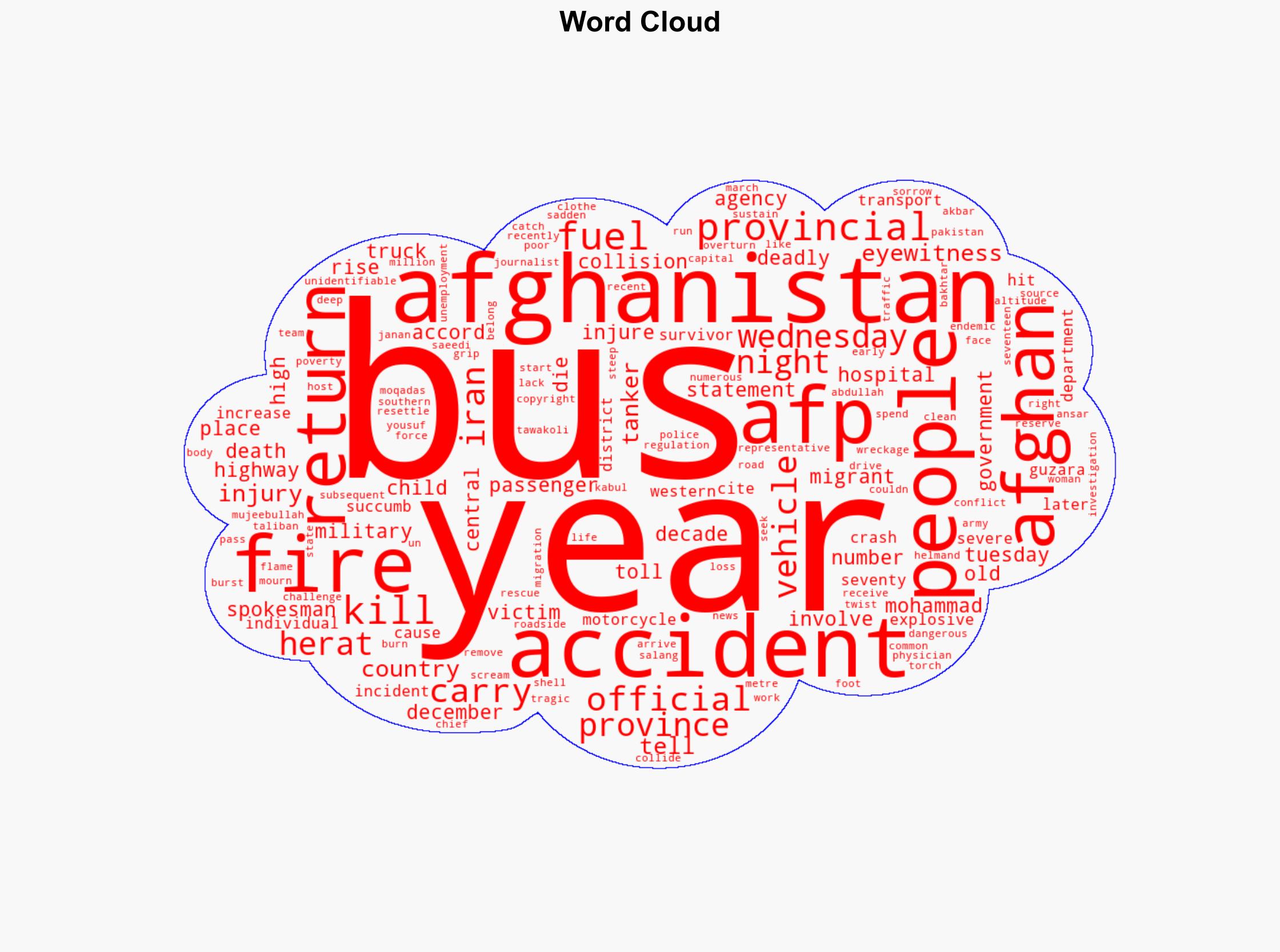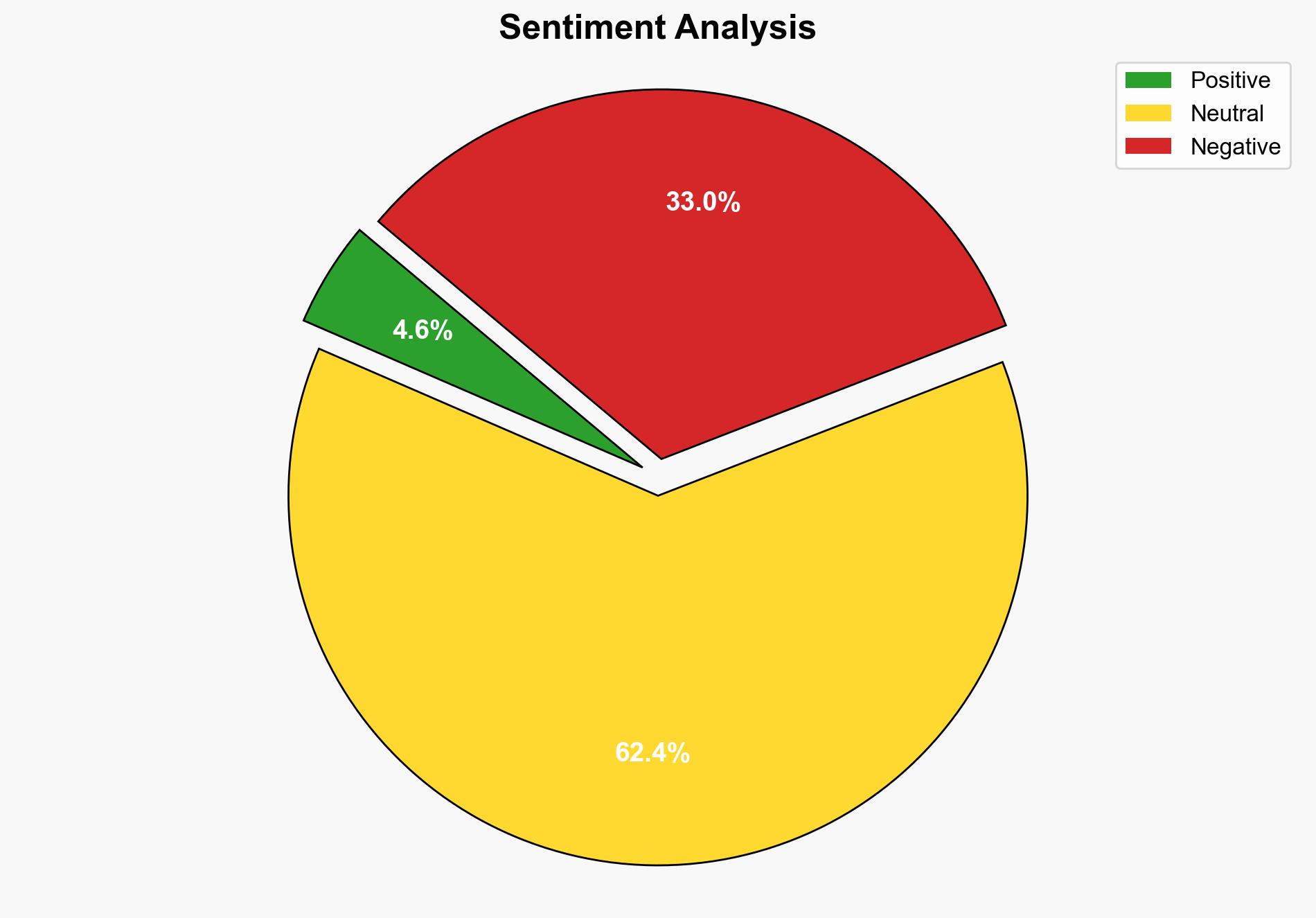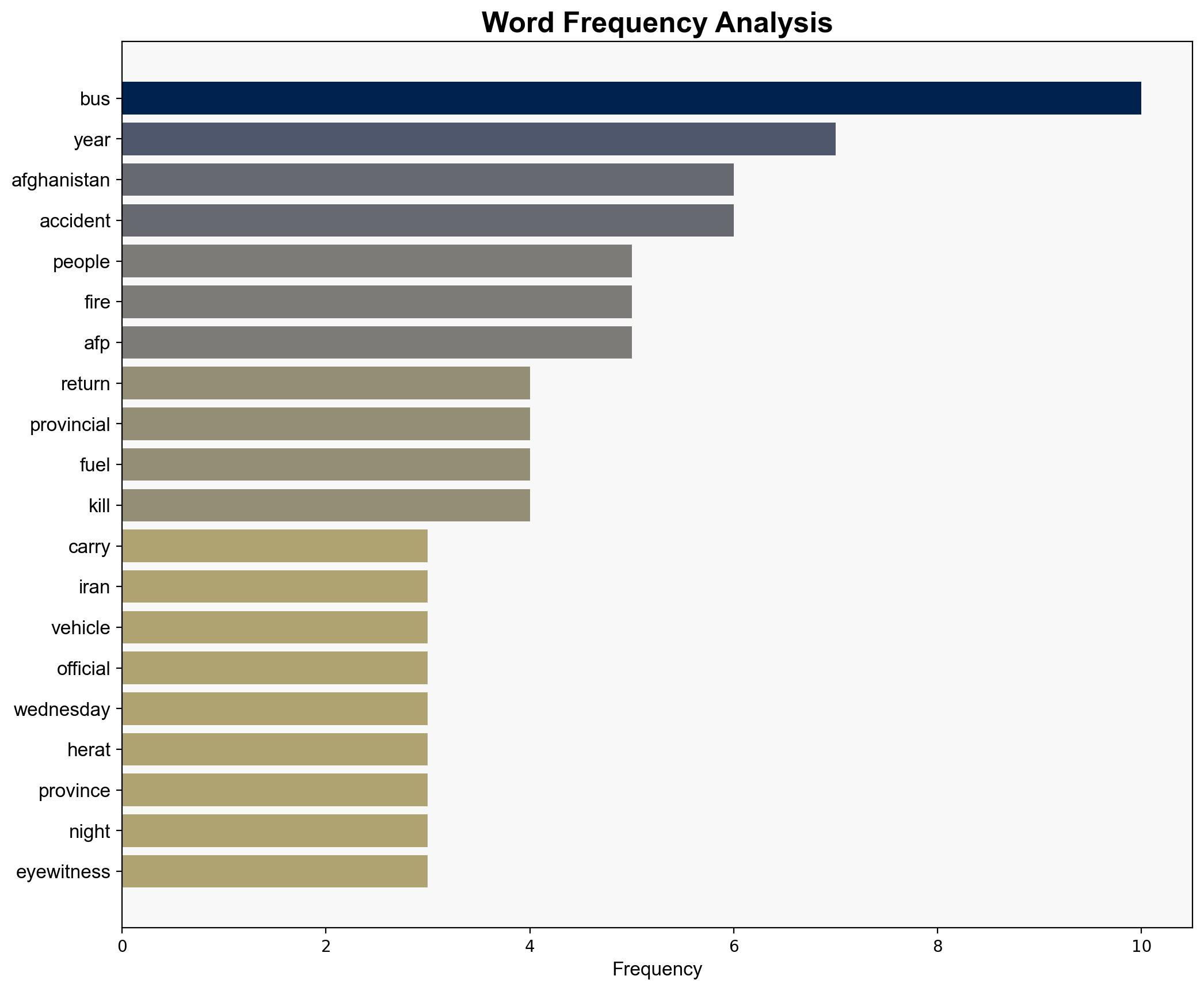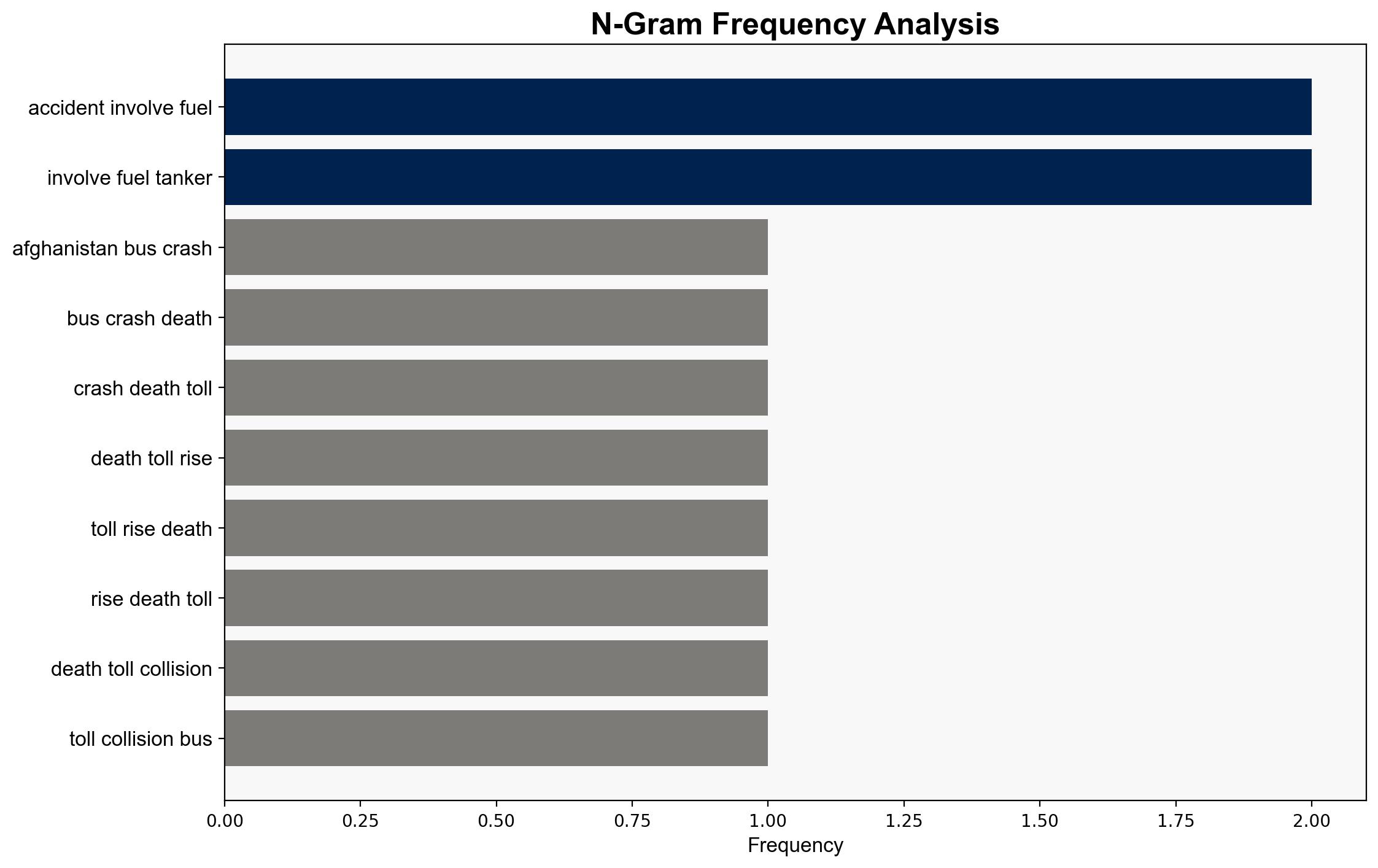Afghanistan Bus Crash Death Toll Rises To 78 – International Business Times
Published on: 2025-08-20
Intelligence Report: Afghanistan Bus Crash Death Toll Rises To 78 – International Business Times
1. BLUF (Bottom Line Up Front)
The tragic bus crash in Herat province, Afghanistan, resulting in 78 fatalities, highlights critical infrastructure and safety challenges in the region. The most supported hypothesis suggests systemic issues in road safety and regulatory enforcement as the primary cause. Confidence in this assessment is moderate due to limited data on the incident specifics. Immediate action should focus on enhancing road safety measures and regulatory oversight to prevent future incidents.
2. Competing Hypotheses
1. **Hypothesis A**: The crash was primarily caused by systemic failures in road safety and regulatory enforcement, exacerbated by poor road conditions and inadequate vehicle maintenance.
2. **Hypothesis B**: The crash was a result of a deliberate act, potentially involving sabotage or negligence, given the involvement of a fuel truck and the high number of casualties.
Using ACH 2.0, Hypothesis A is better supported due to historical patterns of similar accidents in Afghanistan linked to poor infrastructure and regulation. Hypothesis B lacks substantive evidence but remains a possibility due to the involvement of a fuel truck, which could indicate targeted negligence or sabotage.
3. Key Assumptions and Red Flags
– **Assumptions**: It is assumed that the road conditions and regulatory environment have not significantly improved, contributing to the accident. Another assumption is the absence of malicious intent unless further evidence emerges.
– **Red Flags**: The high number of unidentifiable bodies and the involvement of a fuel truck raise questions about potential foul play or severe negligence.
– **Blind Spots**: Limited eyewitness accounts and lack of detailed forensic analysis of the crash site may obscure the true cause of the accident.
4. Implications and Strategic Risks
The incident underscores persistent infrastructure vulnerabilities in Afghanistan, posing risks to public safety and economic stability. If systemic issues are not addressed, similar tragedies could recur, exacerbating humanitarian challenges. Additionally, if foul play is involved, it could indicate broader security threats, potentially destabilizing the region further.
5. Recommendations and Outlook
- Enhance road safety measures and enforce stricter vehicle maintenance regulations.
- Conduct a thorough investigation to rule out sabotage or negligence.
- Scenario Projections:
- Best Case: Improved infrastructure and regulatory measures significantly reduce accident rates.
- Worst Case: Continued neglect leads to more frequent and severe accidents, straining humanitarian resources.
- Most Likely: Incremental improvements in safety measures reduce but do not eliminate the risk of similar incidents.
6. Key Individuals and Entities
– Mujeebullah Ansar
– Mohammad Janan Moqadas
– Mohammad Yousuf Saeedi
– Akbar Tawakoli
– Abdullah
7. Thematic Tags
national security threats, infrastructure safety, regional focus, humanitarian impact




